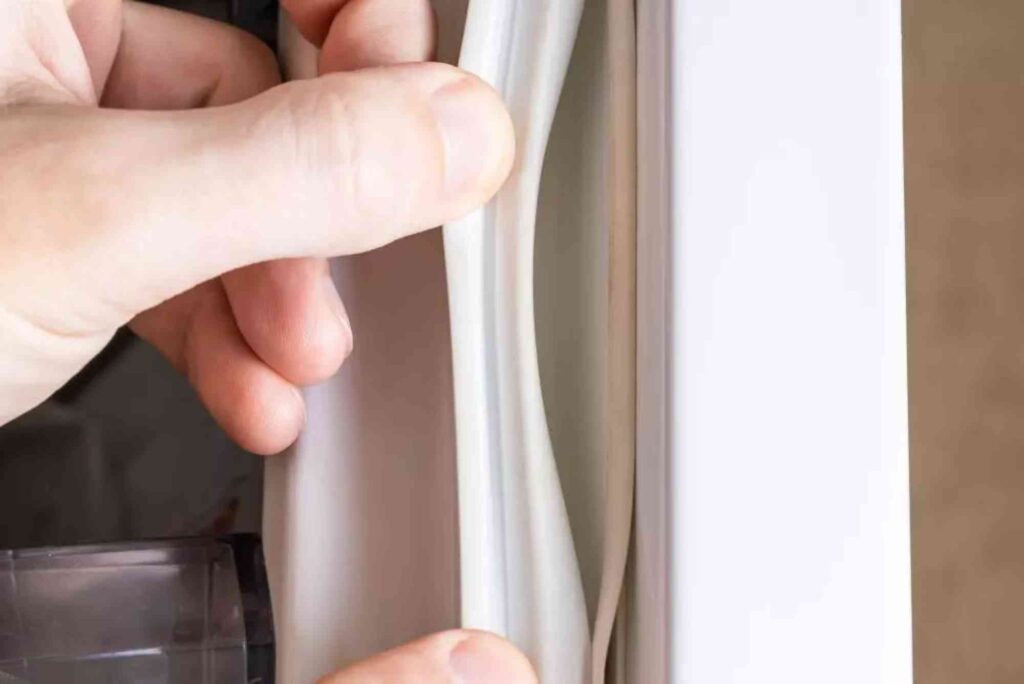A refrigerator is an indispensable appliance in any modern home, keeping food fresh and beverages cool. However, even the best refrigerators encounter issues, and one of the most common problems is a faulty door seal. If your refrigerator door seal is compromised, it can lead to energy inefficiency, spoiled food, and increased utility bills. In this detailed guide, we’ll explore the causes, fixes, and preventative tips for refrigerator door seal issues.
What is a Refrigerator Door Seal?
The refrigerator door seal, also known as the gasket, is the flexible rubber strip lining the edge of your refrigerator door. This component ensures that the door closes tightly, keeping cold air inside and warm air out. When the door seal malfunctions, the cooling efficiency of the refrigerator suffers, leading to higher energy consumption and uneven cooling.
Causes of Refrigerator Door Seal Issues
- Wear and Tear: Over time, the rubber material of the seal can crack, split, or degrade due to regular use and environmental exposure.
- Dirt and Debris: Food particles, dust, or grease accumulation on the seal can prevent it from forming an airtight seal.
- Improper Alignment: A misaligned door or seal can create gaps, allowing cold air to escape.
- Temperature Changes: Frequent exposure to extreme temperatures can weaken the elasticity of the gasket.
- Age of the Appliance: Older refrigerators are more prone to gasket problems due to the natural aging of components.
Signs of a Faulty Refrigerator Door Seal
- The door doesn’t close tightly or pops open.
- There’s condensation or frost buildup near the door.
- The refrigerator motor runs more frequently than usual.
- A noticeable increase in energy bills.
- Cold air escaping around the door edges when closed.

How to Fix Refrigerator Door Seal Issues: Step-by-Step Instructions
If you’ve identified a problem with your refrigerator door seal, here’s how you can fix it:
Inspect the Seal
Carefully examine the door gasket for cracks, tears, or dirt buildup. Run your fingers along the edges to feel for gaps or irregularities.
Clean the Seal
Use a soft cloth soaked in warm soapy water to clean the gasket thoroughly. This removes dirt, grease, and food particles that may hinder the seal’s effectiveness. Dry it completely before proceeding.
Adjust the Seal
If the gasket is misaligned, gently pull and reposition it to fit snugly along the door edges. You can also apply a hairdryer on a low setting to make the rubber pliable and easier to adjust.
Repair Small Tears
For minor cracks or tears, use silicone adhesive or rubber sealant to repair the damage. Allow it to dry according to the manufacturer’s instructions.
Replace the Gasket
If the seal is beyond repair, purchase a replacement gasket specific to your refrigerator model. Remove the old gasket by loosening the screws or clips holding it in place. Align the new gasket and secure it firmly. Test the door to ensure it closes properly.
Top Tips for Maintaining Your Refrigerator Door Seal
Regular Cleaning: Clean the seal weekly to prevent debris buildup.
Check for Alignment: Periodically inspect the door for proper alignment.
Avoid Overloading: Do not overload the door shelves, as this can strain the gasket.
Replace When Necessary: Replace the gasket as soon as you notice significant wear and tear.
Use a Seal Test: Perform the dollar bill test—place a bill between the door and seal. If it slips out easily, it’s time to fix or replace the gasket.
How to Perform the Dollar Bill Test
The dollar bill test is a simple way to check the effectiveness of your refrigerator door seal. Close the door on a dollar bill so that half of it sticks out. Try pulling it out gently. If the bill slides out easily without resistance, the seal is likely damaged and needs attention.
Why Addressing Door Seal Issues is Important
Ignoring a faulty door seal can lead to multiple problems, including:
- Increased electricity bills due to energy loss.
- Spoiled food caused by inconsistent cooling.
- Strain on the refrigerator’s compressor, reducing its lifespan.
To avoid these issues, it’s crucial to address seal problems promptly.
Refrigerator Repair in Dubai: Get Expert Help
If you’re unable to fix the door seal yourself or need professional assistance, don’t hesitate to reach out to Refrigerator Repair Dubai. At Az Repair Dubai, we specialize in repairing all kinds of refrigerator issues, ensuring your appliance runs efficiently for years to come.
Our technicians are equipped with the expertise to handle even the most stubborn door seal problems. Visit Az Repair Dubai to learn more or check our Az Repair Location for the nearest service center.
FAQs: Addressing Refrigerator Door Seal Issues
Q1: How often should I clean my refrigerator door seal?
A: Clean the door seal at least once a week to prevent dirt and grease buildup.
Q2: Can I use any adhesive to repair a door seal?
A: It’s best to use silicone adhesive or rubber sealant designed for refrigerators for long-lasting results.
Q3: How long does a refrigerator door gasket last?
A: A refrigerator door gasket typically lasts 5-10 years, depending on usage and maintenance.
Q4: What if my refrigerator door still doesn’t close properly after replacing the gasket?
A: Check the door alignment and ensure the gasket is installed correctly. If the issue persists, seek professional help.
Q5: Can a faulty door seal affect the temperature inside the refrigerator?
A: Yes, a damaged seal allows cold air to escape and warm air to enter, leading to temperature fluctuations.
A properly functioning refrigerator door seal is essential for maintaining your appliance’s efficiency and ensuring your food stays fresh. By understanding the causes, identifying the signs, and applying the right fixes, you can avoid unnecessary energy loss and expensive repairs. For expert help, trust the professionals at Refrigerator Repair Dubai and visit Az Repair Dubai for all your appliance needs.



